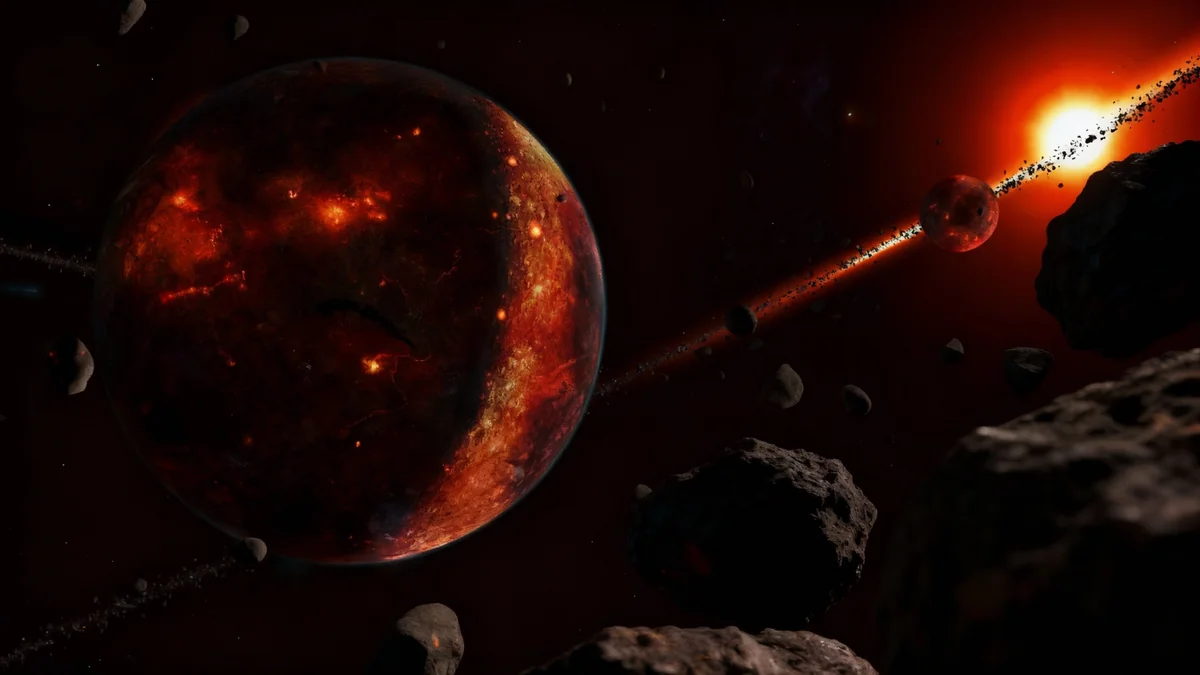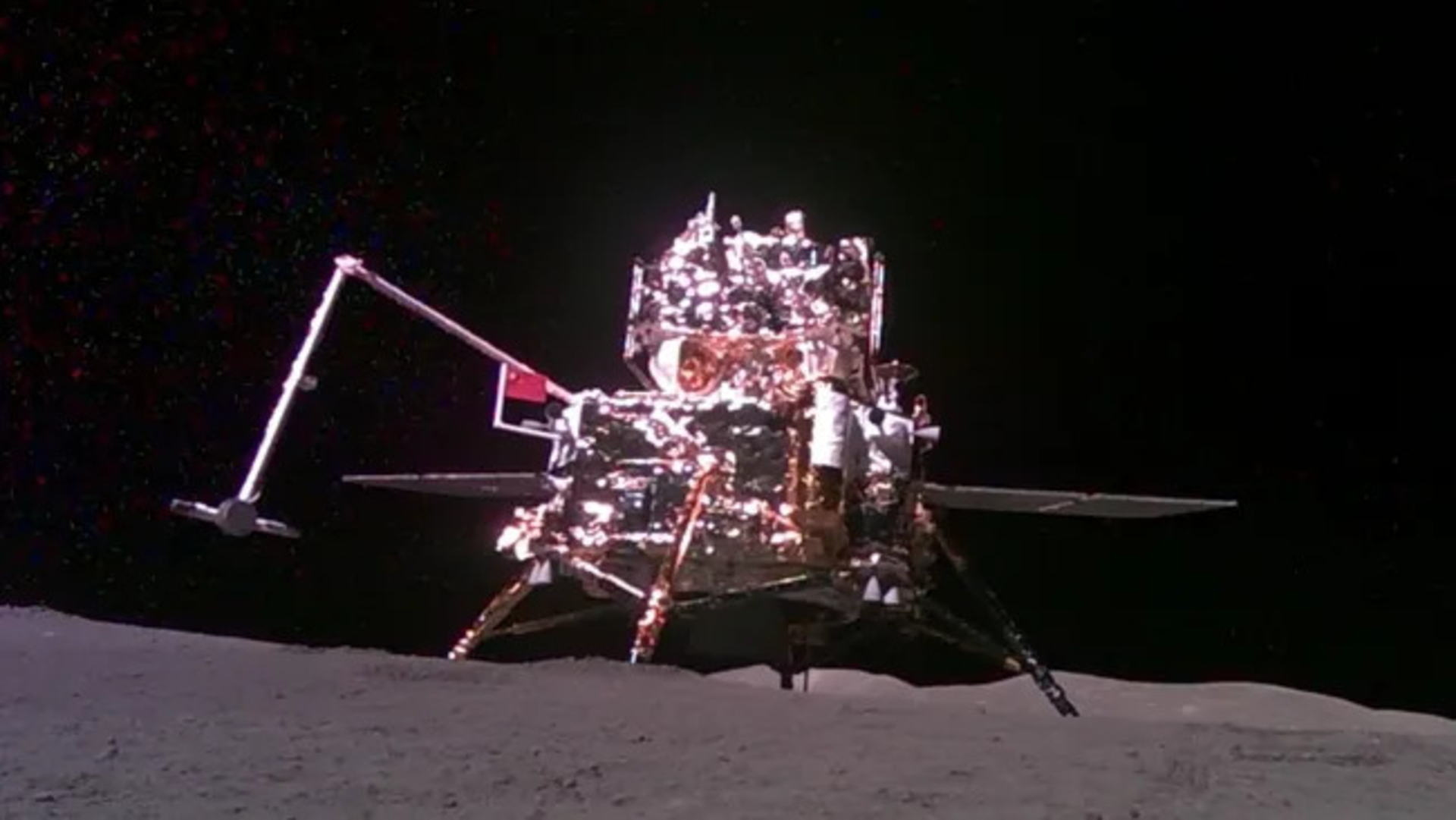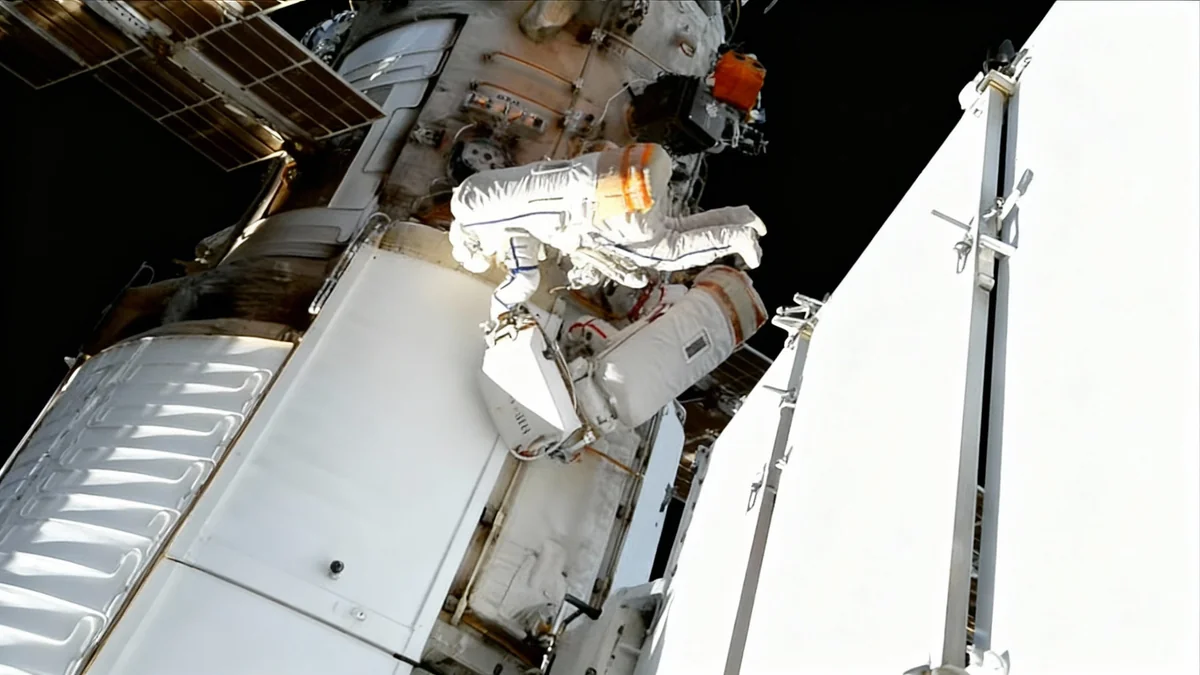Researchers have uncovered what they believe to be the first direct physical evidence of the primordial Earth, a version of our planet that existed before a cataclysmic collision formed the Moon 4.5 billion years ago. This ancient material, identified by a unique chemical signature, has remained hidden deep within Earth's mantle, surviving eons of geological activity.
The discovery, detailed in a recent study, challenges long-held assumptions that the giant impact completely melted and remixed our young planet, erasing all traces of its original composition. Instead, it suggests that pockets of this ancient world have been preserved, offering an unprecedented window into the birth of our solar system.
Key Takeaways
- Scientists have identified a chemical signature in ancient rocks believed to be from the "proto-Earth."
- The evidence is a specific deficit in the potassium-40 isotope, found in samples from Greenland, Canada, and Hawaii.
- This primordial material appears to have survived the massive impact that created the Moon approximately 4.5 billion years ago.
- The finding suggests that Earth's mantle was not completely mixed by the impact and still contains original building blocks.
A Glimpse into a Lost World
Our planet's history began long before the world we know today. About 4.5 billion years ago, a young, molten sphere known as the proto-Earth was taking shape from the gas and dust of the early solar system. This formative period was violently interrupted less than 100 million years later when a Mars-sized object collided with it.
This event, known as the giant impact, was so powerful that it reshaped our world. The debris ejected from the collision eventually coalesced to form the Moon, while the impact itself is thought to have melted and homogenized nearly the entire planet. For decades, scientists believed this process wiped away any chemical record of the original proto-Earth.
A new study published in the journal Nature Geoscience presents compelling evidence to the contrary. A team of researchers has found a chemical fingerprint that they argue could only have come from this pre-impact world.
"This is maybe the first direct evidence that we've preserved the proto-Earth materials," stated Nicole Nie, an assistant professor at MIT and a co-leader of the study.
The Potassium Fingerprint
The key to the discovery lies in the element potassium, which exists in three natural forms, or isotopes: potassium-39, potassium-40, and potassium-41. While chemically identical, they have slightly different masses due to a varying number of neutrons.
In previous work, Nie's team analyzed meteorites and found that objects formed in different parts of the solar system had distinct ratios of these potassium isotopes. This established that potassium could serve as a tracer for the building blocks of planets.
What is an Isotope?
Isotopes are variants of a particular chemical element which differ in neutron number. For example, all potassium atoms have 19 protons, but potassium-40 has 21 neutrons, while potassium-39 has 20. These subtle differences allow scientists to trace the origin of materials.
In the new study, the team turned their attention to some of the oldest and deepest rocks on Earth. They analyzed samples from Greenland, the Abitibi belt and Winnipegosis komatiite belt in Canada, and volcanoes in Hawaii and the northwestern United States. Using a highly sensitive mass spectrometer, they measured the precise ratios of potassium isotopes in these rocks.
The results were surprising. The ancient rocks showed a consistent and significant deficit of potassium-40 compared to modern materials. This anomaly couldn't be explained by known geological processes.
Searching Earth's Deepest Archives
The locations for the rock samples were chosen carefully. Areas like Greenland and parts of Canada are home to some of the oldest continental crust on the planet. Volcanoes in places like Hawaii are believed to be fed by plumes of material rising from deep within the mantle, near the core-mantle boundary.
These deep mantle plumes are thought to carry up material that has remained relatively isolated from the mixing and churning that occurs in the upper mantle. "If this potassium signature is preserved, we would want to look for it in deep time and deep Earth," Nie explained.
To confirm their hypothesis, the researchers ran extensive computer simulations. They modeled various scenarios that could potentially alter potassium isotope ratios, including:
- Later asteroid impacts
- The process of mantle convection
- Large-scale planetary melting
In every simulation, the resulting chemical composition contained more potassium-40 than what was observed in the actual rock samples. The only explanation that fit the data was that these rocks contained a component that originated from the proto-Earth's mantle, which was never fully erased by the giant impact.
"We see a piece of the very ancient Earth, even before the giant impact," Nie remarked. "This is amazing because we would expect this very early signature to be slowly erased through Earth's evolution."
Rewriting Planetary Formation
This discovery has profound implications for our understanding of how Earth was formed. It suggests that our planet is not a thoroughly mixed body but rather a mosaic, containing reservoirs of primordial material that have persisted for billions of years.
The Giant Impact Hypothesis
This is the leading scientific theory for the formation of the Moon. It proposes that a protoplanet named Theia, roughly the size of Mars, collided with the early Earth. The impact launched a massive amount of debris into orbit, which later accreted to form the Moon. This event was the last time Earth experienced such large-scale melting.
Furthermore, the specific potassium signature found in the proto-Earth material does not match any known meteorites. This indicates that the building blocks that formed our planet may have been different from the meteorite samples currently in our collections.
"Scientists have been trying to understand Earth's original chemical composition by combining the compositions of different groups of meteorites," Nie noted. "But our study shows that the current meteorite inventory is not complete, and there is much more to learn about where our planet came from."
The finding opens a new chapter in planetary science, providing the first tangible link to the lost world that existed before the Moon graced our skies. It suggests that deep within our own planet, the story of its birth is still waiting to be read.





